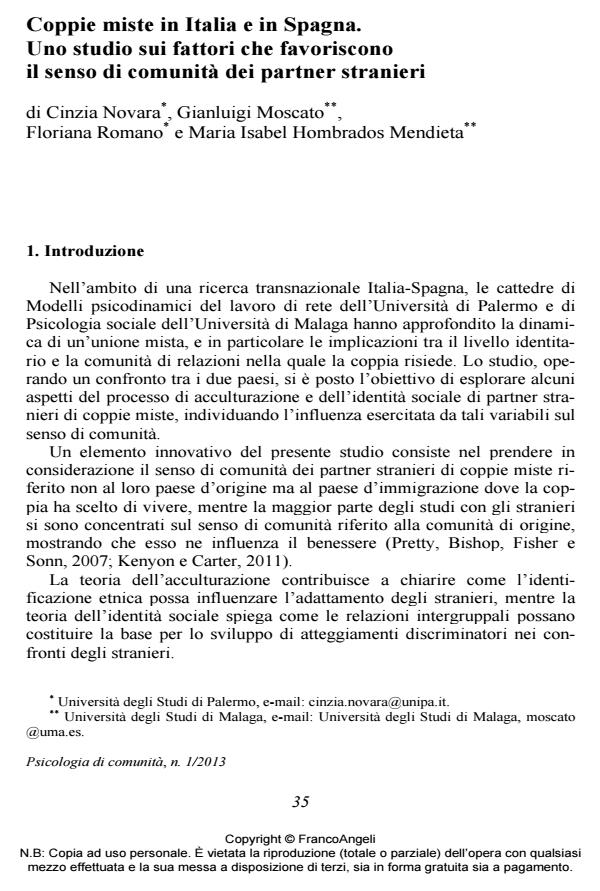Coppie miste in Italia e in Spagna. Uno studio sui fattori che favoriscono il senso di comunità dei partner stranieri
Titolo Rivista PSICOLOGIA DI COMUNITA’
Autori/Curatori Cinzia Novara, Gianluigi Moscato, Floriana Romano, Maria Isabel Hombrados Mendieta
Anno di pubblicazione 2013 Fascicolo 2013/1
Lingua Italiano Numero pagine 12 P. 35-46 Dimensione file 869 KB
DOI 10.3280/PSC2013-001004
Il DOI è il codice a barre della proprietà intellettuale: per saperne di più
clicca qui
Qui sotto puoi vedere in anteprima la prima pagina di questo articolo.
Se questo articolo ti interessa, lo puoi acquistare (e scaricare in formato pdf) seguendo le facili indicazioni per acquistare il download credit. Acquista Download Credits per scaricare questo Articolo in formato PDF

FrancoAngeli è membro della Publishers International Linking Association, Inc (PILA)associazione indipendente e non profit per facilitare (attraverso i servizi tecnologici implementati da CrossRef.org) l’accesso degli studiosi ai contenuti digitali nelle pubblicazioni professionali e scientifiche
Lo scopo del presente contributo è stato quello di analizzare come l’identificazione etnica (ingroup ed outgroup) e la discriminazione percepita (come straniero o come partner di coppia mista) siano legati al senso di comunità (SdC) dei partner stranieri delle famiglie interculturali residenti in Spagna e in Italia. I risultati mostrano che in entrambi i gruppi l’identificazione con il proprio gruppo etnico-culturale non è associata al SdC. Inoltre, l’aumento della discriminazione percepita come coppia mista porta ad una diminuzione del senso di comunità e della soddisfazione di vita.
Parole chiave:Coppie miste; senso di comunità; soddisfazione di vita; stranieri; identificazione etnica; discriminazione percepita.
Cinzia Novara, Gianluigi Moscato, Floriana Romano, Maria Isabel Hombrados Mendieta, Coppie miste in Italia e in Spagna. Uno studio sui fattori che favoriscono il senso di comunità dei partner stranieri in "PSICOLOGIA DI COMUNITA’" 1/2013, pp 35-46, DOI: 10.3280/PSC2013-001004